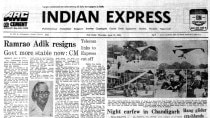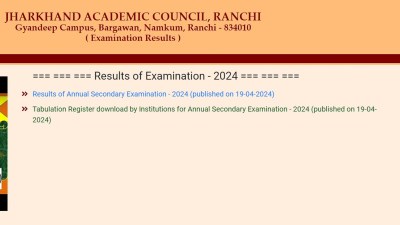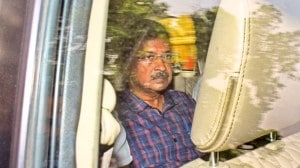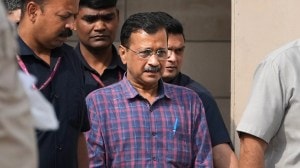- India
- International
The jihad on Twitter
When journalists are kept away from the frontline, propaganda and disinformation can rush in.
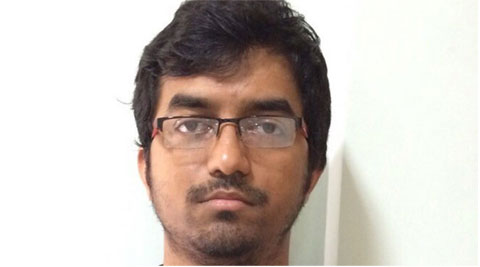 Mehdi Masroor Biswas
Mehdi Masroor Biswas
One hundred and sixty-seven days ago, @ShamiWitness sent out a tweet: “Ya Allaah, I can’t hold back my tears… Ya Allaah, guide,protect,strengthen and expand this Khilafa. #CaliphateRestored #KhilafaRestored.” Ninety-seven people retweeted the Islamic State fanboy’s plea to advance the Islamic caliphate. Immensely popular online as an IS cheerleader, his was a meteoric rise, coupled with prolific tweeting — he had sent out 1.3 lakh tweets since the inception of the account. A study by the International Centre for the Study of Radicalisation and Political Violence viewed him as the greatest “
A study by the International Centre for the Study of Radicalisation and Political Violence viewed him as the greatest “influencer” of online militant jihad. Often, @ShamiWitness was asked about his whereabouts, a topic he successfully dodged until the unmasking by Channel 4 News. @ShamiWitness, or Mehdi Masroor Biswas, is a pizza- eating, Hawaiian-theme partying, 24-year-old white-collar worker for a giant food conglomerate in Bangalore. Since the outing, charges have been levied both online (he has been called a “Twitter jihadi” and a “fake”) and under the laws of this country: he has a case registered against him under the IT Act and has been booked under Section 125 of IPC for waging war against any Asiatic power in alliance with the government of India.
For years, @ShamiWitness tweeted about day-to-day developments and rebel successes in the Syrian civil war. Often, he even broke stories, such as the fighting on the Ninawa-Hasakah border. He had an intimate understanding of Salafist and jihadist groups and by 2013, had established himself as a prominent online voice on the Syrian conflict. And he had many listeners. Among them were prominent international newspapers such as the Telegraph in London, which asked @ShamiWitness to weigh in on the US-Russian deal on Syria while blogs such as Jihadology, run by Aaron Zelin. even gave him space to write a guest post. @ShamiWitness was frequently included by Syria watchers, such as analyst Hassan Hassan, who has 19,000 followers, with the #FF (Follow Friday) hashtag — essentially a show of appreciation for another tweeter.
As the Syrian civil war got more complex, with mounting Free Syria losses at the hands of the IS, @ShamiWitness too underwent a metamorphosis. His tweets became more aggressive, he often called other fighters apostates and nonbelievers and by 2014, was radicalised as a virtual warrior for the notorious Islamist group. As his voice grew louder, the voices of traditional war witnesses — journalists — dipped. The government of Bashar al-Assad is partially at fault: it has restricted reporter entry and access since the early days of the conflict. The brave few often snuck across the Turkish border, like Anthony Shadid did with fatal consequences. But with the IS’s lightning advances, the Turkish border soon fell under its control. It is there that American journalist James Foley is believed to have disappeared, only to appear in a video in which he was beheaded by the IS. @ShamiWitness shared that video five times.
In December alone, four journalists have lost their lives in Syria. The Committee to Protect Journalists views Syria as the most dangerous dateline in the world today. It is against this backdrop that the rise of @ShamiWitness should be seen. But by no means is he the first unverified source used in this conflict.

In the early days of the conflict, the Syrian Observatory for Human Rights (SOHR) spoke on behalf of the rebels and was cited in various newspapers, from the New York Times to the Guardian, as a well-placed source on the number of rebel casualties. The SOHR is a one-man show run by Rami Abdul Rahman from a small house in suburban Coventry. During the day, Rahman runs a used clothes store on the high street while coordinating with sources in Syria via Skype. Often his numbers have been inflated and he has been accused of being a stooge for the Gulf Cooperation Council. In an interview to this paper, the Syrian ambassador to the UN, Bashar Ja’afari, questioned Rahman’s reliability: “The international media rely on this source… had anybody heard of the observatory before the crisis? Is it a credible source?”
After the observatory’s moment in the limelight, @BrownMoses was catapulted to fame. Elliott Higgins, then an unemployed stay-at-home dad in Nottingham, chronicled the Syrian uprising from his armchair by analysing footage on YouTube. So influential was his work that New York Times reporter C.J. Chivers worked on an exclusive story with him. Later Higgins broke the story of chemical-weapon use in Eastern Ghouta in Syria that was later challenged by Pulitzer-prize winning journalist Seymour Hersh. In an interview for Fountain Ink Magazine, Hersh told me that though social media could be a positive force, there were challenges because of “tendentious, dishonest, amateur, silly and malicious stuff being reported daily”.
After them came @ShamiWitness, who inspired others, some of whom are even more radical than he is. Upon news of his arrest, Twitter went into overdrive as @ShamiWitness trended while jihadis mourned the loss of a “brother” and others speculated who would take his place. Syria is the first war that has unfolded in real time on social media, and MehdiMasroor Biswas is another cautionary tale against relying on anonymous sources. But with the Assad government’s gagging policies and the terrifying tactics employed by the IS, journalists are kept at bay, away from the frontlines, while social media fills in the void, promising anonymity in a war rife with propaganda and disinformation.
The writer is a Mumbai-based journalist
EXPRESS OPINION
More Explained
Apr 19: Latest News
- 01
- 02
- 03
- 04
- 05











